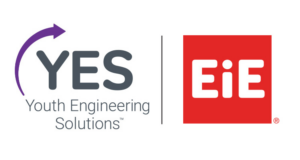Unit Overview
Students engineer vests that incorporate an electric communication system to increase pedestrian, cyclist, or skateboarder safety at a busy intersection.
- Recommended for Grade 4
- Setting: In school
- Science connection: Electrical circuits, energy, information transfer
- 9 lessons
- 45 minutes per lesson
Standards alignment
We’ve developed each YES unit with careful attention to state and NGSS standards. YES units are also designed to integrate with the most popular elementary and middle school curricula. View Standards Alignment
